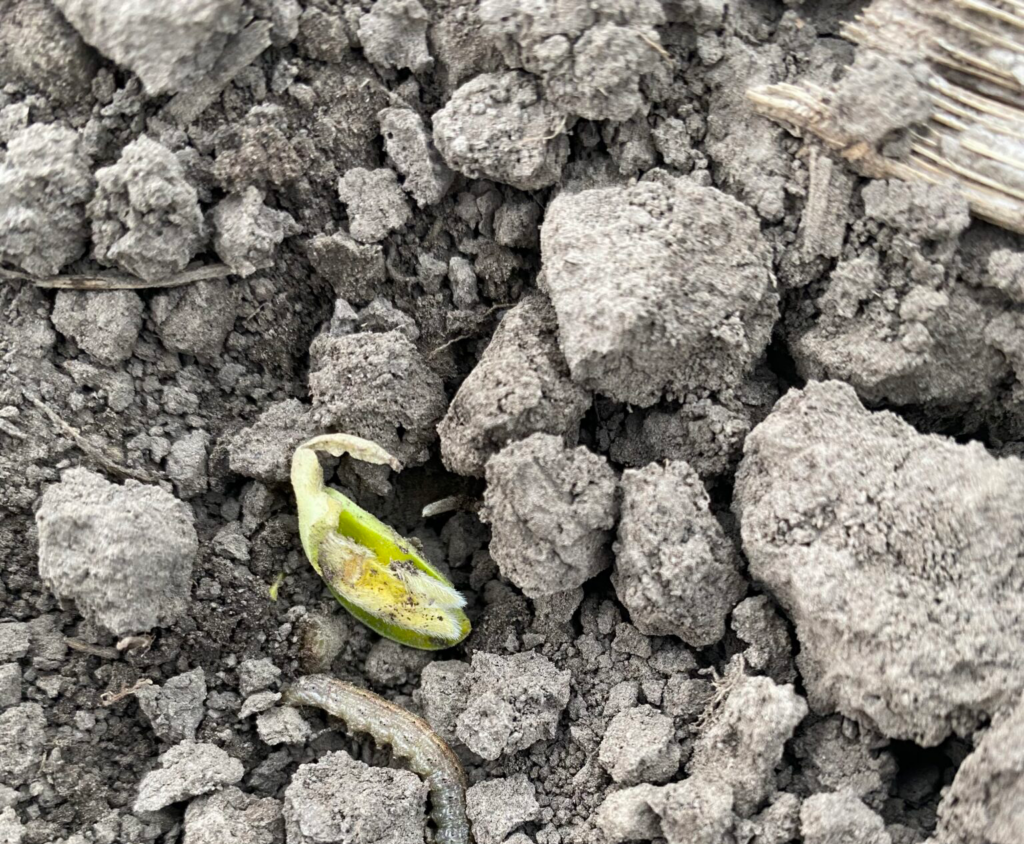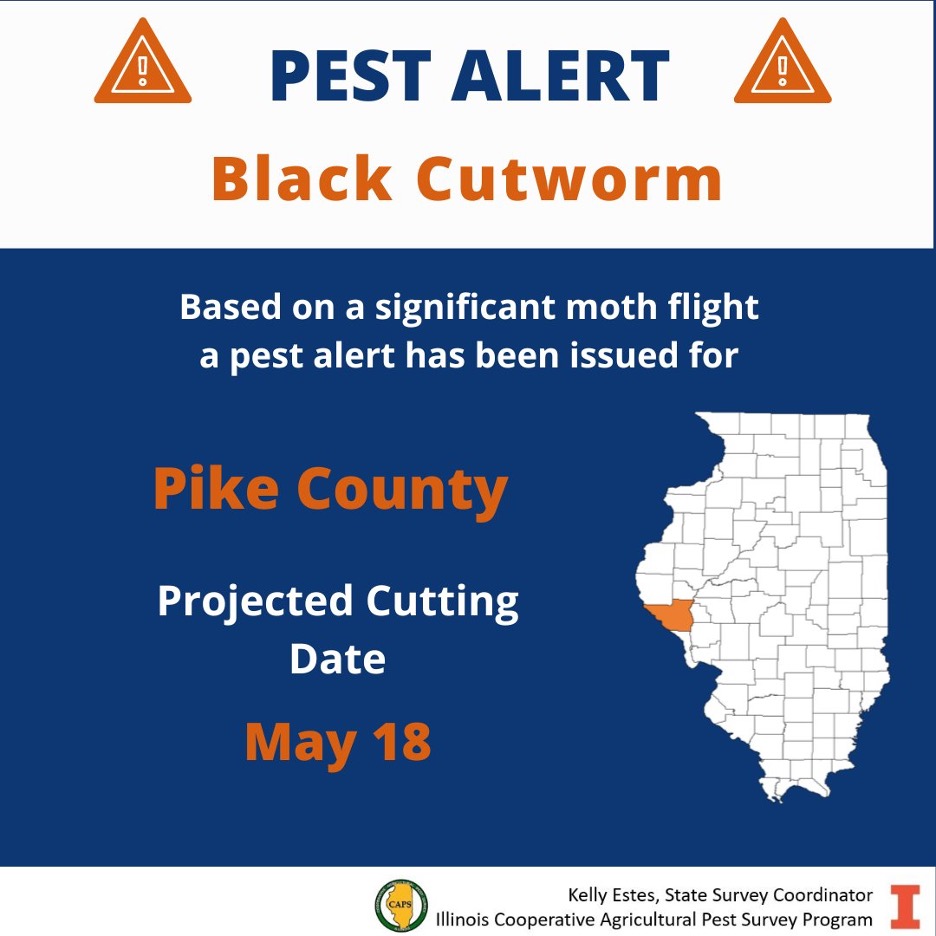
ISA Soy Envoy, Michael Hicks, recently reported that cutworm with damages to soybeans was found in Region 4 or Western Illinois. This alert was detailed via the ILSoyAdvisor Crop Report, a new tool found on ILSoyAdvisor.com.
Keep in mind that there are several different species of cutworm that can infest many different plant species, which does include soybeans. Cutworms generally look alike and will be smooth with very few hairs. They are about two inches long when fully grown and are known for curling into a tight “C” shape.
Different cutworm species can vary in color, with some being all one color, while others can be spotted or striped. Some cutworm larvae might be dull, while others can be glossy or shiny. For more tips on how to identify different cutworm species, you can go to Cutworms, brought to you by the Soybean Research and Information Network (SRIN).
On April 13th, Kelly Estes of the Illinois Pest Survey reported via Twitter that there was a #PestAlert and that the first black cutworm moths of the season were coming in heavy in Western Illinois. She reported a significant black cutworm flight in Pike County and the projected potential cutting day was May 18th.
black cutworm moths of the season were coming in heavy in Western Illinois. She reported a significant black cutworm flight in Pike County and the projected potential cutting day was May 18th.
These cutworms were overwintering and have flown into the Midwest from the South. More often, they like to infest fields that are later planted or consist of vegetation. Younger cutworm larvae feed at night or on cloudy days above ground. As the larvae get older, they prefer to stay within the soil and can cut plants below, at, or above ground level.
Scouting for cutworms should start at emergence and continue until plants are past the V5 growth stage. Check for leaf feeding, wilted, or cut plants. If you see any signs of cutworm infestation, dig around the base of the plant to find the cutworm larvae.
Soybeans can tolerate relatively high levels of stand loss; however, if cutworms are causing significant stand loss, treatment may be warranted. Established thresholds vary widely among states. The minimum number of plants per foot normally needed for good yields at different row spacing is as follows:

For a treatment to be effective, cutworms need to be present and less than one inch in length. But, as the cutworm larvae grow and mature, control with an insecticide becomes increasingly difficult.
Resource: Cutworms – Soybean Pest – Soybean Research & Information Network – SRIN (soybeanresearchinfo.com)


 and then
and then